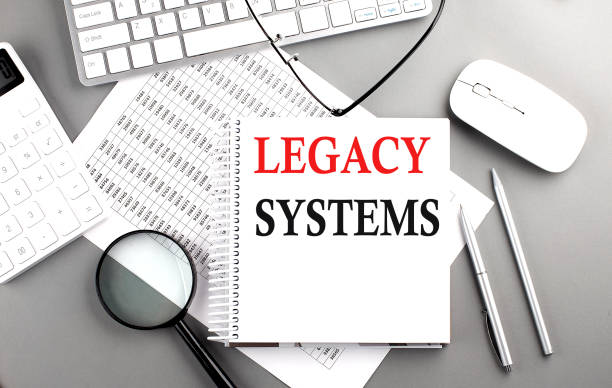
#SmartIndustry
5 February 2025
Smart Industry 4.0 : why system interoperability is a major challenge for technical directors
Industry 4.0 relies on advanced automation, industrial IoT, artificial intelligence, and real-time data analysis. However, a central challenge still hinders many companies in their transition to a connected and intelligent factory: system interoperability.
For technical directors, ensuring seamless interconnection between machines, software, and IT infrastructure is imperative to maximize productivity and avoid technological silos. Let's explore the challenges and solutions to overcome this strategic issue.
Interoperability : a key lever for a connected industry
Definition and importance of interoperability
Interoperability refers to the ability of various industrial systems (software, equipment, communication protocols) to exchange, process, and interpret data coherently.
In Industry 4.0, it is essential for:
- Facilitating the integration of new technologies without disrupting existing systems.
- Ensuring operational continuity between heterogeneous machines and platforms.
- Optimizing data management for faster and more accurate decision-making.
- Reducing costs associated with specific adaptations and maintenance.
Why do industrial systems struggle to communicate ?
The manufacturing industry has historically been marked by a wide variety of proprietary equipment and software, making their interconnection complex. The main obstacles include:
- Proprietary protocols (Modbus, Profibus, OPC-UA, MQTT) that are not always compatible.
- Segregated IT infrastructures, particularly between the operational technology (OT) layer and the information technology (IT) layer.
- A lack of universal standards, complicating the integration of new technologies.
- Increased cybersecurity risks when a large number of systems need to be interconnected.
Benefits of successful interoperability in industry 4.0
More agile and responsive production
A connected factory capable of synchronizing all its machines and systems can react in real time to production uncertainties. For example, if a defect is detected on a line, the information is immediately transmitted to the ERP system to adjust flows accordingly.
Optimized maintenance through IoT
IoT sensors collect real-time data on equipment status. When this data is seamlessly integrated into maintenance software, it becomes possible to anticipate failures and reduce unexpected downtime.
➡ Example: An automotive company reduced maintenance costs by 30% by integrating a predictive monitoring system based on IoT sensors.

Improved production flow management
Interoperability enables smooth communication between production lines, inventory, and logistics. This promotes:
- More effective planning by avoiding supply disruptions.
- Reduced waste through better management of raw materials.
- Continuous improvement by identifying bottlenecks.
➡ Example: A food processing plant reduced losses by 20% by optimizing raw material tracking through an interconnected system.
Enhanced cybersecurity
Integrating numerous connected devices poses new security challenges. An interoperable approach allows for:
- Centralized management of access and updates.
- Implementation of industry-specific security standards.
- Reduced risk of attacks by segmenting IoT and IT networks.
Solutions and best practices for ensuring interoperability
Adopt open and universal standards
Using standardized protocols facilitates IoT solution interoperability and scalability. Among the most widespread are:
- OPC-UA : Ideal for connecting industrial equipment with management software.
- MQTT : A lightweight protocol for real-time data transfer.
- Modbus and Profibus : Frequently used in industrial automation.
Implement a unified data management platform
IoT Middleware allows for the collection, structuring, and transmission of data between different systems without requiring complex adaptations.
Examples of solutions: ThingWorx (PTC), Azure IoT Hub (Microsoft), Bosch IoT Suite.
Adopt an edge computing approach
Instead of sending all data to a centralized cloud, Edge Computing allows for local data processing on industrial gateways, improving reactivity and reducing latency.
➡ Advantages:
- Less dependence on cloud infrastructure.
- Reduced data transmission costs.
- Improved reliability and security.
Secure data exchange
An interoperable ecosystem must be protected against cyber threats. To achieve this:
- Encrypt communications between systems.
- Segment OT and IT networks to prevent unauthorized access.
- Continuously monitor anomalies via SIEM (Security Information and Event Management) solutions.
Conclusion : a strategic imperative for technical directors
System interoperability is a central challenge for any industry seeking to fully exploit the opportunities offered by Industry 4.0. For a technical director, investing in compatible and interconnected solutions is a major competitive lever.
With a standardized, secure, and scalable approach, companies can:
- Reduce operational costs.
- Optimize production.
- Anticipate failures and improve maintenance.
- Ensure better resilience against cyberattacks.
➡ Want to ensure optimal interoperability for your industry? Contact our experts for tailored support.









